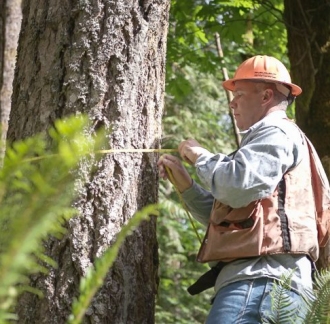
 Due to innovations in silvicultural management techniques, today, private forest owners are growing 43% more wood than they remove from their timberlands.
Due to innovations in silvicultural management techniques, today, private forest owners are growing 43% more wood than they remove from their timberlands.
July 15, 2021 - The broad topic of climate change is now top-of-mind across the legislative, corporate and consumer landscapes. While all channels continue to develop viable and innovative methods to mitigate the risks of climate change, forests are quietly doing much of the heavy lifting in the background. In fact, forest ecosystems make up the largest terrestrial carbon sink on Earth.
In the US alone, there are approximately 1.4 trillion live trees across all age/size classes on more than 635 million acres of forestland in the continental US that store an estimated 71,808 million metric tons (MMT) of carbon dioxide (CO2). Across the US, forests, urban trees, and harvested wood products remove 14% of all CO2 emissions and store the equivalent of 33 years of all CO2 emissions produced across the country.
Contrary to what is oftentimes promoted in popular media, America’s working forests are not being destroyed, abused or “deforested” beyond repair. According to the USDA, from 1953 to 2011, in a time of expanding population and increasing demand for solid wood products, paper products, and energy, the total volume of trees grown across the US increased by 50%. Due to innovations in silvicultural management techniques, today, private forest owners are growing 43% more wood than they remove from their timberlands.
How do we know America’s forests are not being permanently destroyed? The most precise method to gauge the balance of tree growth and removals is to analyze the growth-to-removal ratio (GRR), which reflects the interplay between these two metrics in a given area. As an indicator of the trajectory of available supply over time (not a snapshot of availability at a moment in time), a GRR calculation quantifies overall forest sustainability.
A value of 1.0 suggests growth and removals are in balance; a value greater than 1.0 means forest inventory growth is outpacing removals (greater sustainability), and a value lower than 1.0 means removals are outpacing growth (lower sustainability). For example, a GRR of 1.33 means that growth is outpacing removals by 33%, whereas a GRR of 0.95 means that removals are outpacing growth by 5%. Adjusting for land-use changes, studies have shown GRR in a region tends to be cyclical over long periods of time as market forces react to high or low ratios that then move back toward equilibrium. Per the most recent data via the USFS, America’s forested regions have an excess of available supply.
SOURCE: Forest2Market
Paper Industry Newsletter
Stay on top of paper industry news
from around the world with
PaperAge's free weekly newsletter.
Delivered every Thursday.
Sign up today!